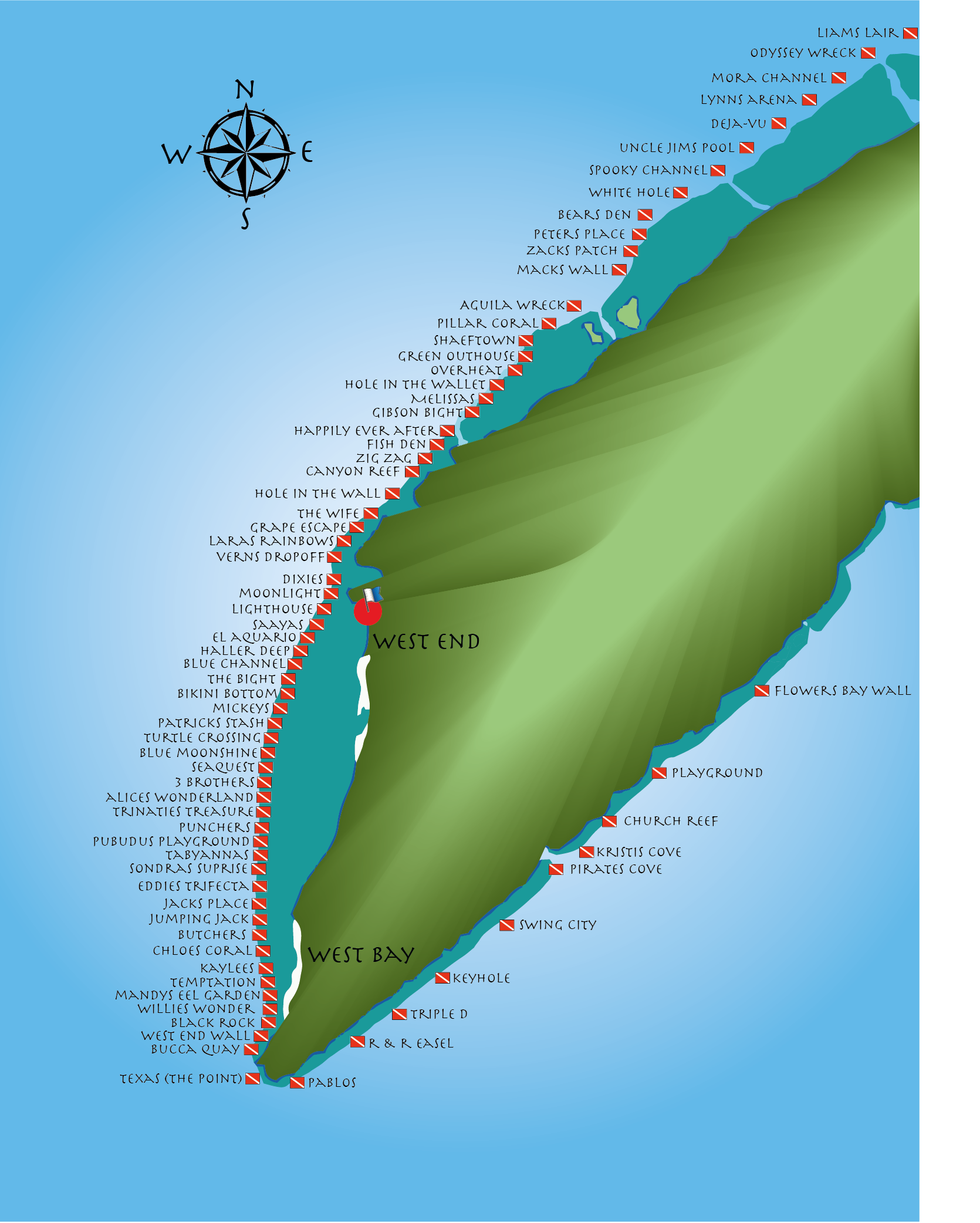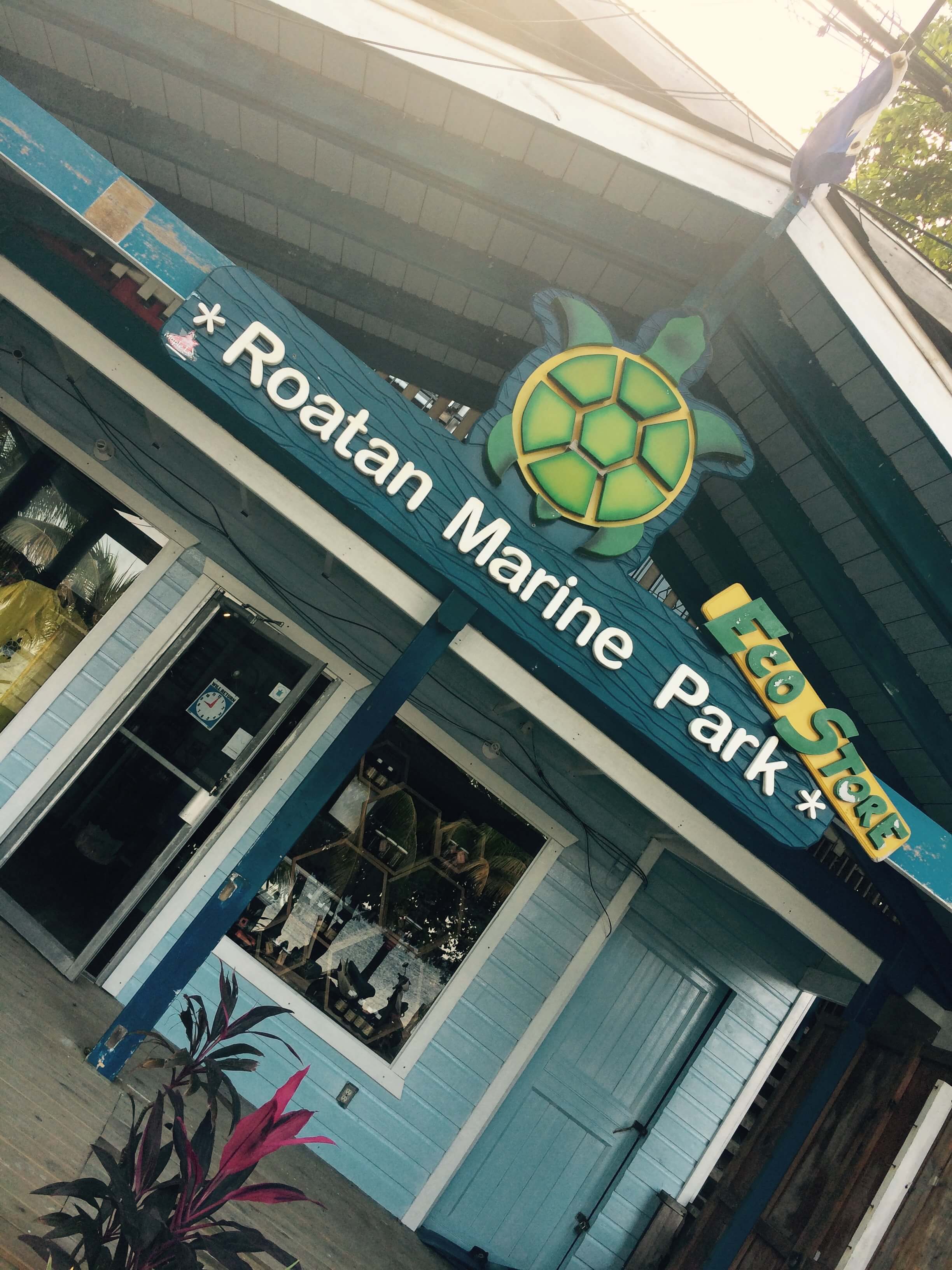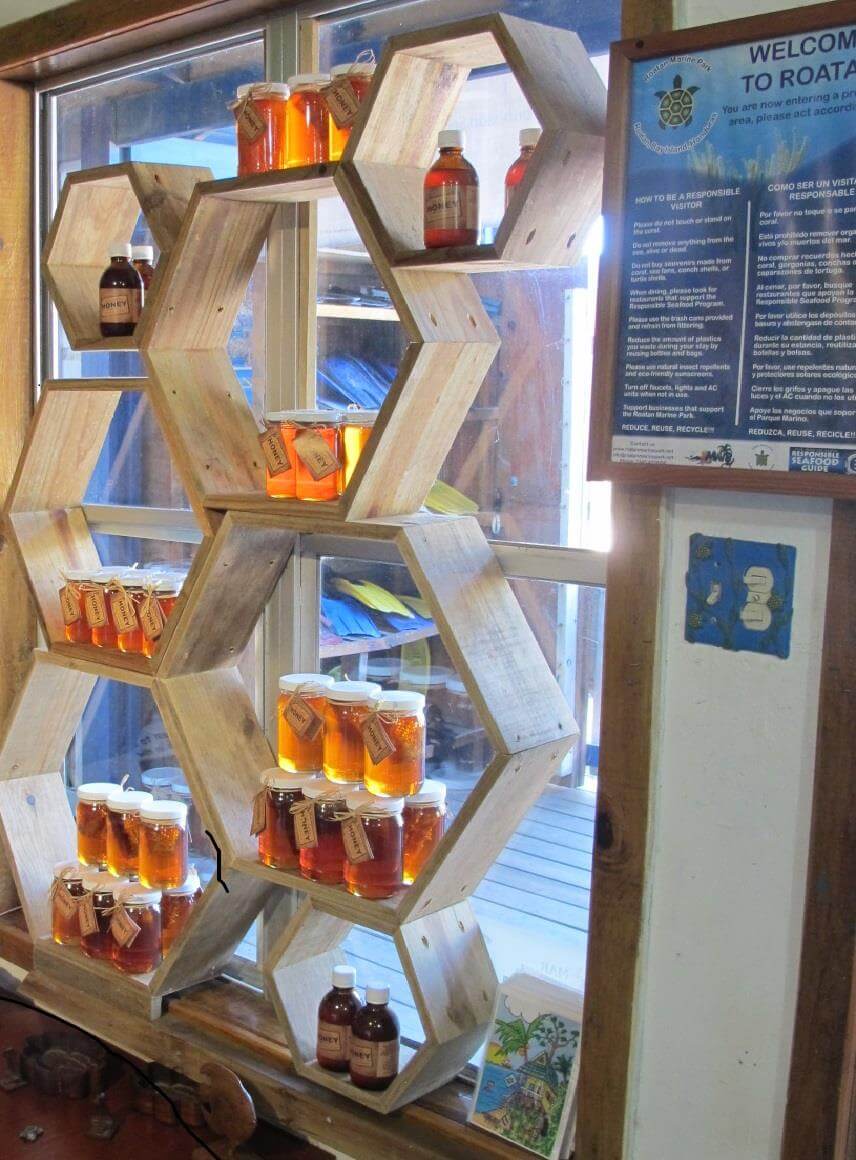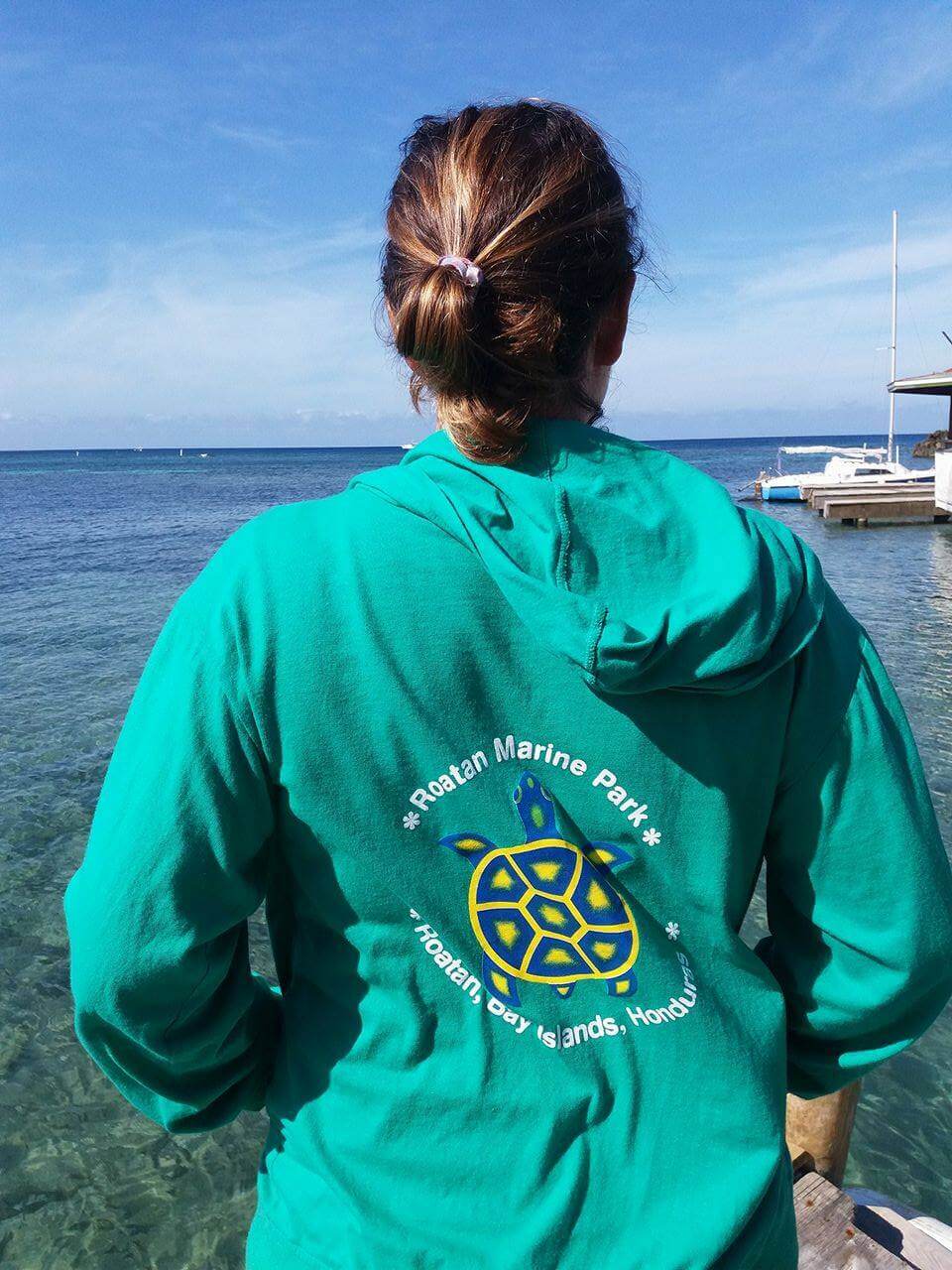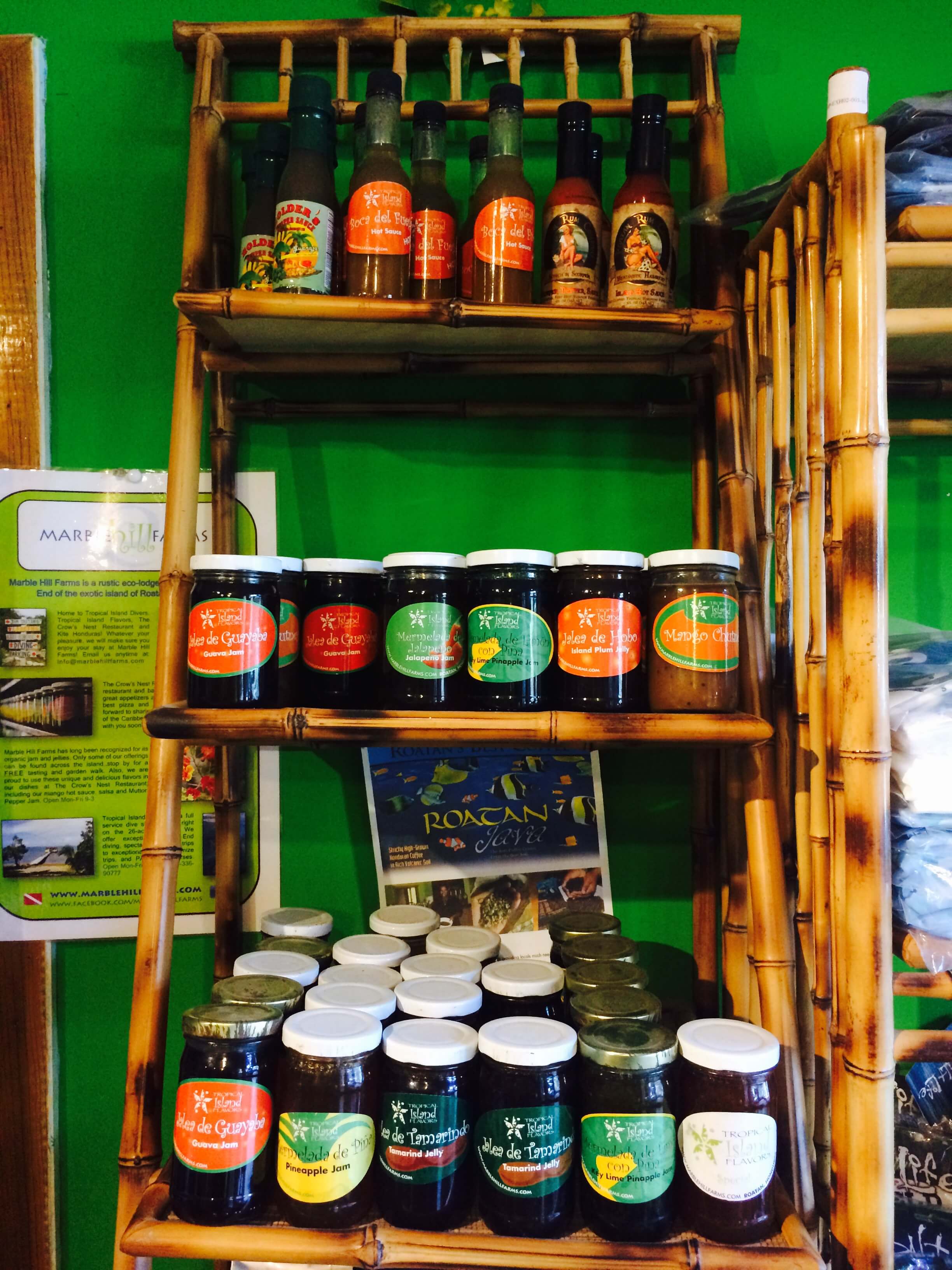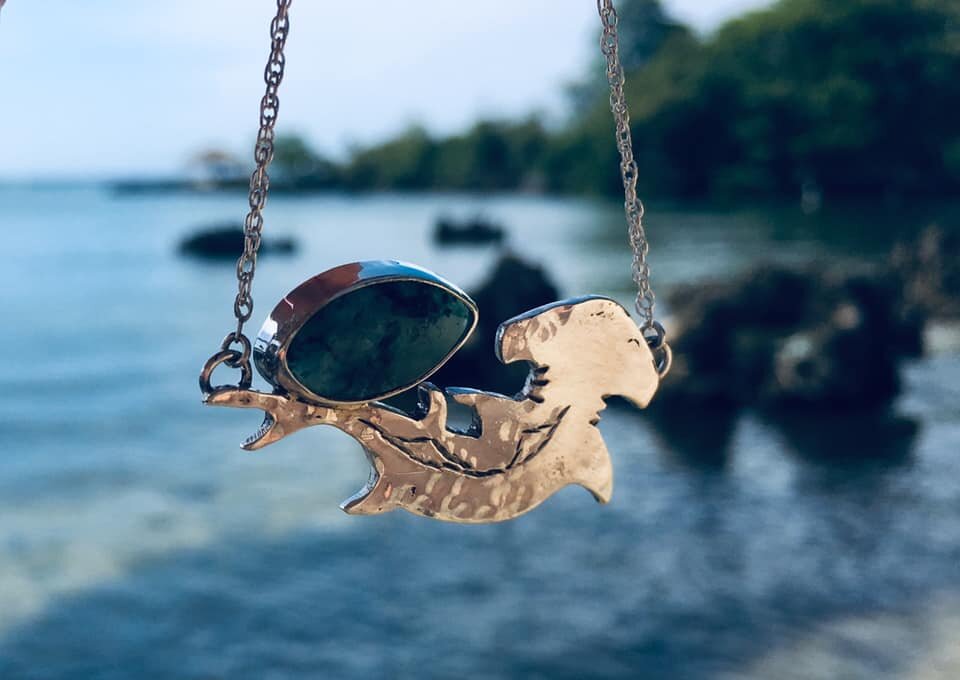Can I Scuba Dive In Roatan Without A Certification?
You’ve heard all about how good the diving is in Roatan, which means you have to try it. But can you scuba dive in Roatan if you aren’t certified? We answer all your certification questions and more in our latest blog!
Planning your tropical vacation to Roatan is an exciting time! After all, there are so many incredible activities for you to experience. From lounging on white sand beaches to playing with sloths and monkeys…and don’t forget the most popular island pastime - scuba diving! For those unfamiliar with the sport, it sounds as easy as putting on some scuba gear and going in the water, right? Not really.
Scuba diving requires certain skills, knowledge, and understanding of the equipment, safety procedures, and potential risks involved.
Luckily, PADI has made it easy for those interested in scuba diving to do just that. So while you can’t simply hop on a boat and dive in Roatan without a certification, there are several options available to you.
Option One: PADI Discover Scuba Dive
The Discover Scuba Dive (DSD) is perfect for adventure enthusiasts who are short on time or merely want to “dip their toes” into the water. A DSD is a half day experience which consists of an introduction to scuba equipment and dive theory, followed by basic skills practice in Half Moon Bay, and ending with your first dive in the ocean to 40’.
While a Discover Scuba Dive does not certify you, it does allow you to see what diving in Roatan is all about - without the time and financial commitment of the full Open Water Course. That being said, if you do enjoy scuba diving and have availability, you can continue into the full PADI Open Water or PADI Scuba Diver Certification.
Option Two: Get PADI Certified!
If you have decided that pursuing your scuba certification is definitely something you want, then you can get PADI certified while in Roatan. We currently offer two entry level certification courses: PADI Scuba Diver and PADI Open Water.
The PADI Scuba Diver course takes around 2 full days to complete, and in the end will certify you to dive to 40’ with a professional. The PADI Open Water course requires a bit more time and effort; taking 2.5 to 3 days to complete. But in the end, you are certified to dive to 60’ with a buddy or a professional.
Whichever course you decide on, both will delve into topics such as dive planning, equipment use, dive physics, physiology, underwater communication, and dive safety. All while exploring Roatan’s gorgeous underwater world!
Prerequisites For Diving In Roatan
Whether you’re trying it out or pursuing your full certification, there are a few prerequisites to bear in mind before you can go diving in Roatan. You must be:
At least 10 years old to participate in any of the above programs
In good physical health and possess adequate swimming skills
Otherwise, a positive attitude and sense of adventure is all you need! Oh, and reef safe sunscreen.
Are you ready to go scuba diving in Roatan?
6 Species Nature Lovers Should Look Out For On Roatan
While Roatan is known for her coral reefs, there is still plenty of wildlife to enjoy above the water. Check out these 6 species nature lovers should look out for when they travel to Roatan!
The tiny island of Roatan, which happens to be the largest of the Bay Islands, is overflowing in natural wealth and rich history. While many will agree that the majority of Roatan’s wealth lies in her coral reefs, there is still plenty for nature lovers to admire above the water. Read on for the top 6 species nature lovers should look out for on Roatan!
Roatan Island Agouti (Dasyprotcta ruatanica)
What was that quick brown blur scurrying across the pathway? Was that a guinea pig with hooves? Nope! It was the endemic Roatan Island Agouti - also known as a “watusa” by the locals. The Roatan Agouti, which is slightly smaller than the Central American Agouti, is known for its rich orange-brown fur, and tends to bear a white spot on the chin and a yellowish patch on the belly. Active both day and night, this timid and adorable island rabbit can be found in the bush where it enjoys snacking on almonds, coconuts, and hibiscus.
Yellow-Naped Parrot (Amazona auropalliata)
It’s early in the morning, the sun is coming out to play, and the trees are alive with the sound of the birds. If you listen closely, you may just hear the squawks of the endemic Yellow-Naped Parrot. These beautiful birds are known for the yellow band that resides across the nape of their neck, and their vibrantly green crown. Unfortunately, deforestation and the illegal pet trade has contributed to this species being declared critically endangered by the IUCN Red List. One of the best places to still get a glimpse of the Yellow-Naped Parrot is the Blue Harbor Tropical Arboretum.
Roatan Spiny-Tailed Iguana (Ctenosaura oedirhina)
If you’re coming to Roatan, spotting the endemic Spiny-Tailed Iguana should be a must on your list! This black-and-white striped iguana is distinguished by its rounded snout, and was finally recognized as its own species in 1987. Known as “garrobo” by the locals, these iguanas can be found in mangroves, the iron shore, and even in urban areas such as the Grand Roatan in West Bay. However, the Roatan Spiny-Tailed Iguana is considered endangered due to food exploitation, predation by cats and dogs, and habitat loss. At this time, approximately 4,500 iguanas live on the island.
Green-Breasted Mango Hummingbird (Anthracothorax prevostii)
They say great things come in small packages - like the Green-Breasted Mango! These delightful hummingbirds love to pollinate the local flora and sip sweet nectar; literally living the dream. The males are known for their deep green feathers, blue throat, and purple and orange (hello, mango) tail feathers. While they are easily spotted around the island, you can visit La Sirena on the East End for a special treat on the water - the intentional placement of several bird feeders mean these hummingbirds abound while you enjoy a fabulous meal.
Golden-Fronted Woodpecker (Melanerpes aurifrons)
Ah, the Roatan island alarm clock. No, we don’t mean the chickens - we mean the Golden-Fronted Woodpecker! If you’ve ever spent a night in Roatan, you’ve likely heard the early morning plucking of this gorgeous bird outside your window. With a rich yellow nape and lower belly, female Golden-fronted Woodpeckers look as if they have been sprinkled with gold. Always ones to outdo themselves, the males top off their plumage with a gold forehead and brilliant red/orange crown.
Roatan Coral Snake
(Micrurus ruatanus)
You know the rhyme “red on yellow, kill a fellow, red on black is a friend of Jack?” Well…not so much. The endemic and, unfortunately critically endangered, Roatan Coral Snake is known for its timid nature and alternating black and red bands. Although no yellow is present on the body, the snake's venom has been studied to show a toxin-rich substance that is lethal to mice. In fact, its high potency was determined to be one of the most lethal in Central America! The Roatan Coral Snake can generally be found towards the West side of the Island, where it enjoys shelter under coconut leaves or within wetlands.
This list comprises only a small fraction of the incredible wildlife you can witness on the island. Your best bet for seeing the full range of biodiversity that Roatan has to offer is to hire a local guide - just as you would for scuba diving! Joel Amaya with Roatan Wildlife is one such guide who is not only a bird-watcher's dream come true, but is also pioneering the environmental education, documentation, and conservation efforts of wildlife species on Roatan.
So what are you waiting for, nature lovers?
Get out there and see some neature!
6 Practices For Diving Safely During COVID times!
In March of 2020, Roatan Divers, along with most of the rest of the world, were forced to take a very long and unexpected surface interval.
In March of 2020, Roatan Divers, along with most of the rest of the world, were forced to take a very long and unexpected surface interval. After 5 months of desaturating, Roatan has finally opened its borders for international and domestic flights. If you’re ready to get those fins back in the water, take a look at these 6 Practices for Diving Safely During Covid before booking your trip with us!
1. Let us take care of the gear.
Here at RD we are a full service shop, so let us take care of the setting up, dismantling, and disinfecting of all the gear. We have put new disinfecting measurements in place, including individual rinsing of mouthpieces, to ensure everything is cleaned properly.
2. Don’t be shellfish, wear a mask!
The RD team can’t wait to see your smiling faces...and we’ll have to trust that’s exactly what you’re doing underneath that mask. Our masks protect you, your masks protect us, and Plus 1 Masks protect you plus those in need on Roatan (if you’re looking for a stylish COVID Souvenir that gives back).
3. Make like a cleaner shrimp and wash those hands!
There are some things we can avoid touching, like the marine life. There are other things we can’t, such as door handles. Be sure to wash your hands or use hand sanitizer (which we have strategically placed around the shop), after coming in touch with high contact surfaces.
4. Respect your buddy’s space...and air
Give your buddy room to frog kick! Social distancing is important when it comes to reducing the risk of transmission. And while highly unlikely, you may end up in a situation where you need to share air. Instead of breathing from your alternate during your pre-dive safety check, simply purge it while breathing from your first stage!
5. Watch where you’re blowing those bubbles!
And that gunk out of your nose. Be cognizant of where you are clearing your snorkel or rinsing your mask while in the water, and avoid expelling these…fluids...around other divers.
6. Do not dive if you are experiencing symptoms of COVID.
If you, or someone you’ve been in contact with, is experiencing symptoms of COVID, immediately isolate and contact medical professionals. Roatan’s beautiful reef will be waiting for you when you get better!
Want more info on diving safely after COVID? Check out DAN’s resources on their website.
Top 3 Tips to Take Care of Your Ears when Scuba Diving
Ears.
We need them to hear, we need them to equalize when scuba diving, and they make our faces look less weird. All important functions, no? Our ears perform incredibly important functions for us, and while they are resilient and sturdy, it’s important that we take care of them. When we’re scuba diving, it’s even more imperative that our aftercare is done right so that we don’t have any equalization issues or pain as the week progresses.
So without further ado, here are our Top 3 Tips To Take Care Of Your Ears When Scuba Diving!
Ears.
We need them to hear, we need them to equalize when scuba diving, and they make our faces look less weird. All important functions, no? Our ears perform incredibly important functions for us, and while they are resilient and sturdy, it’s important that we take care of them. When we’re scuba diving, it’s even more imperative that our aftercare is done right so that we don’t have any equalization issues or pain as the week progresses.
So without further ado, here are our Top 3 Tips To Take Care Of Your Ears When Scuba Diving!
Rinse out your ears with warm water after a dive
You know how a salty towel never dries? In the same way, if you don’t rinse your ear with fresh water after a dive, salt water can stay inside your ear and create the perfect environment for bacteria and fungus to grow. If you’re close to a shower, turn your ears in the direction of the shower and use warm water to rinse your ears out. If you’re on a liveaboard or day boat and don’t have access to a shower, mix cold and hot water in a cup from the beverage station and pour it into each ear to rinse them out.
Do not, I repeat, do NOT use cotton swabs
How much clearer can we say this? Ear doctors (also known as a otolaryngologist, for all you fancy people) and scuba instructors alike will tell you to never use cotton swabs to clean out your ears. We get that it’s weirdly refreshing to clean your ears out with them, but did you know they do more damage than good? Cotton swabs can actually push wax further into your ear instead of taking it out, obstructing your ear canal. Your ear drum can be reached with a cotton swab as well, so pushing too hard can actually puncture it. Rinsing your ears out with warm water is just as effective as it softens and loosens your ear wax without risking damaging your ears, so listen to the doctor and opt out of cotton swabbing.
Vinegar and rubbing alcohol make for the best drops
If warm water isn’t enough to keep your ears healthy, our homemade ear drop mixture will do the trick! While you are most welcome to buy ear drops from the pharmacy, these aren’t as cost effective as a homemade mixture and normally contain glycerin, which can leave an oily residue behind. We like to make a 50/50 mix of vinegar and rubbing alcohol. Rubbing alcohol dries your skin while the vinegar balances the pH, so you can dry your ears without over drying. Most people have both items at home anyways, so make a small batch before you go on a trip and put it in a travel friendly bottle before your next trip and , voila! Clean, happy, healthy ears.
So there you have it! Though this definitely isn’t our sexiest blog post, it’s an important one, so we hope you learned something and we’ll see you on Roatan soon to put those tips to good use!
3 Important Rules for Proper Beach Etiquette
Let’s talk about proper beach etiquette! If you practice a little mindfulness and follow these 3 important rules for proper beach and reef etiquette, you can do your part as a responsible tourist (or resident) to help keep our island amazing!
Tourism is both a blessing and a curse. Islands like Roatan rely heavily on tourism for their economy, and the tourism industry can help push through conservation initiatives to protect natural heritages. However, a big influx of people who are not aware of proper etiquette can do more damage than good. As the world gets smaller, it's important for visitors around the world to practice responsible tourism and leave each place in better condition than when we visited it. You went somewhere because it was beautiful and interesting, so shouldn't others be allowed the same privilege?
Let's bring the conversation to Roatan and talk about proper beach and reef etiquette! If you practice a little mindfulness and follow these 3 important rules for proper beach and reef etiquette, you can do your part as a responsible tourist (or resident) to help keep our island amazing!
1. No standing on the reef
Standing on the reef is a big no-no. Whether you're snorkeling from a boat or from shore, if you get tired and need to take a rest, you should either float on your back to regain your strength or stand on sand. Coral is alive; it's a living, breathing animal, and standing on it can do irreparable damage. If you don't feel comfortable snorkeling without standing on something, wear a life jacket to help you float.
You should also avoid walking through turtle grass. A lot of little animals, like nudibranchs, crabs and juvenile fish live in turtle grass, so it's an important ecosystem on Roatan. Keep a healthy distance from coral and turtle grass so that our marine world can continue to thrive.
2. No touching!
+5 points if you get this Arrested Development reference!
Seriously, though, no touching. No touching, grabbing, or collecting marine life. Everything underwater, from a small, empty shell to a piece of grass, can be a home or food for a marine animal, so please don't pick anything up off the beach or take anything out of the water. No matter how small, each life is precious, and deserves to live its life without harassment from us.
As a follow-up: be aware of what you are purchasing. Just because you don't physically take it out of the water, purchasing marine souvenirs, such as conch shells, seahorses and coral is all off-limits. Make sure to educate yourself on the illegal wildlife trade and sustainability, because ignorance is not an excuse.
3. Pick up your trash
High season, especially times like Semana Santa, normally sees our beaches get littered with plastic bags, takeaway containers and soda bottles. These eventually end up in the ocean, where they can get snagged on or choke turtles and fish, or end up in their stomachs. Avoid using disposable plastics by carrying your own reusable items, and always throw your garbage in the trash if you do end up using disposable plastic.
Since we know it can be difficult to go traveling with your own reusable containers, try to frequent restaurants that offer alternatives to plastic. A lot of restaurants offer takeaway containers made from paper, courtesy of the Roatan Marine Park, which have less impact on the environment than plastic does. There are even biodegradable, plant-based options out there, too! Remember, even if you're using plastic alternatives, littering is still not allowed.
So there you have it, 3 easy and important rules to follow for proper beach and reef etiquette! Whether you're traveling far away or staying closer to home, practicing responsible tourism will help ensure a better future for the planet. Have a happy summer and hopefully you'll all get to enjoy our little island soon.
How Much Does It Cost to Stay in West End, Roatan for a Week?
So you're coming to visit Roatan for a week or so, fantastic! When it comes to travel expenses like food, transport, lodging and activities, many travelers want to have an idea of how much to budget. One thing to note: costs here on Roatan might not be what you expect.
So you're coming to visit the West End area of Roatan for a week or so, fantastic! When it comes to travel expenses like food, transport, lodging and activities, many travelers want to have an idea of how much to budget. Spoiler Alert! Things here in West End might not be what you expect.
When you think of Roatan as being part of Honduras, many travelers expect things to be super affordable since we're in Central America. The reality is that Roatan is an island, and almost everything consumed here is imported. Our food, products and supplies had to undergo a much longer journey to make it to our happy island, and therefore that drives up the price of just about everything.
Let's do a quick breakdown on the most common travel expenses when visiting West End, Roatan. Keep in mind that when it comes to other islands and what things cost there, Roatan still ranks high in terms of affordability and getting the most bang for your buck.
Food & Drink Costs
The view from Ginger's Caribbean Grill, across the beach from Roatan Divers
Whether you are eating out at a restaurant or buying groceries, expect the price to be what you would typically pay in the United States. We have big supermarkets in Coxen Hole and French Harbor, which carry many of the common American name brands most tourists recognize. On average, these goods will cost the same, if not more than if you were buying them at your local grocery store.
For eating out at most restaurants in West End, expect to spend around $8-$13 per person (not including tip). Food can run about $15-20 a person at a few of the more upscale establishments. To read more about tipping policies and other FAQ here on the island, go here for a helpful guideline.
And sure, it's possible to find cheaper eats depending on what foods you enjoy (think fried food and lots of carbs)! Here in West End, we do have local street vendors, serving typical Honduran food, like Baleadas and platos tipicos (meat, beans and rice) for around $5.
We know, we know - the biggest question on your mind is how much a beer costs, right? Many of us like to gauge the affordability of a travel destination by their cost of beer. In Roatan, average cost for local beer is about $3, wine & imports (think U.S beers) $5, and cocktails between $5-7.
Lodging
West End sits at just about 1 mile long, and within that area is a range of accommodation options for travelers. Whether you prefer a more established hotel in the heart of West End or a home or condo for rent on the outskirts if you enjoy being off the beaten path a bit, there's always somewhere you can find that will fit your needs.
Hotels
Prices for hotels in West End can range from $35 to $200 a night (not including hostels), so every budget is covered. Important factors to consider when thinking about your hotel options are the time of year (high season prices vs low season prices) and if they include A/C or offer any meal options in their price. Hotels here are generally pretty small in size and they bring much of the charm and small community setting that people love about Roatan.
It's important to note that while West Bay has all-inclusives, hotels in West End do not. Most hotels don't include breakfast, either, so make sure to keep that in mind and read up on the fine print when you're searching for accommodation.
What are some nice hotel options? The Beach House Roatan is a luxury, boutique hotel located in the center of West End and sits directly on Half Moon Bay. Prices start at $175/night + 19% tax and include breakfast. For travelers wanting a more affordable, basic accommodation, we invite you take a look at Anderson Sunset Villas. They offer studio rooms and two-bedroom apartments between $45-75/night. Contact us for availability.
Vacation Rentals
Depending on the size of your group, a vacation rental condo or a house might be what you're looking for. With prices ranging from $600-1,200/week for 1, 2 or 3 bedroom options, condos can cut down on your accommodation expenses (one 2 bedroom condo can be cheaper than getting 2 hotels rooms) and give you the freedom of cooking your own meals. Caribbean Colors offer a variety of properties in West End and the surrounding areas, and their properties offer modern amenities, great locations and stellar service.
Transportation
If you're staying in the West End area, the great news is that you can walk to practically everything! Lodging, dive centers, restaurants and bars all sit within a small area. However, when it comes to airport transportation, traveling to Coxen Hole or the eastern areas of the island, you will need wheels. Taxis are a great, safe option to consider. They will be more expensive if you want a private taxi, but if you're fine sharing the ride with others, you can request a "collectivo". Taxis here don't have meters, so generally you will agree upon a price before getting in and heading out. The price will fluctuate depending on location and number of people. Remember to bring small bills, since taxies here rarely carry change!
Activities
Roatan offers a range of activities, but of course we are most famous for our diving! The costs for diving on Roatan is some of the most affordable in the world, especially when you consider how healthy and vibrant our reef is and how many dive sites we have to offer.
Other activities like ziplining, snorkeling, spas, fishing, golf, or boat excursions are available as well. The cost varies per operator, but we encourage people to consider responsible eco-tourism. For more information about supporting eco-conscious businesses, visit Go Blue Bay Islands, who together with National Geographic can guide you to vendors and operators who demonstrate their commitment to the environment. They rock!
Hopefully we've managed to give you a nice overview of what things cost here in West End and piqued your interest about staying on our beautiful island! For more information about currency on Roatan, check out our other post, 5 Things to Know About Currency on Roatan. As we mentioned, while Roatan may not be be the cheapest destination available, it's still a great value when you take into account the total cost of a trip here, combined with the amazing value of being a part of a small island community with a nice blend of modern and rustic vibes.
Want to know more? We're happy to help guide you through planning your next holiday to Roatan so please send us a note. We can't wait to hear from you!
5 Great Reasons to go Scuba Diving on Roatan
Roatan is often called the jewel of the Caribbean because of its many amazing features - its lush, hilly landscape, azure waters, the friendly people and diverse and rich culture. With direct international flights from Houston, Miami, Atlanta, Cayman and San Salvador, it’s also never been easier to get to paradise. Here are 5 great reasons we think you should go scuba diving on Roatan!
Roatan is often called the jewel of the Caribbean because of its many amazing features - its lush, hilly landscape, azure waters, the friendly people and diverse and rich culture. With direct international flights from Houston, Miami, Atlanta, Cayman and San Salvador, it’s also never been easier to get to paradise! Roatan’s claim to fame is, of course, its amazing reefs and marine life, so going scuba diving should be on the top of your "to do" list when you visit. Even if you've traveled to other popular dive destinations without going diving, here are 5 great reasons we think you should go scuba diving on Roatan!
Reason 1. The dive sites are super close
Since the reef starts only a few hundred feet from land, the entire island is basically one giant dive site. From West End alone, we have over 30 dive sites within a 10 minute boat ride, which means less time on the boat and more time in the water! Most dive centers run single tank trips because of the proximity of the dive sites to the dive centers, so you have the choice of one, two or three dives in the day and can spend your surface intervals comfortably on the beach with a cold lemonade (or beer, but only after diving!) in hand.
Reason 2. So nice, but you don't have to do them twice
The benefit of having so many dive sites in such close proximity means that unless you request to repeat a site, you don't have to. Obviously, if you're doing 50 dives out of West End, then yes, you will end up repeating some sites, but it's very easy to create variety in your diving experience. The West Bay area is filled with sand chutes, coral plateaus and mini-walls, while you get cool canyons and deep walls as you move towards Sandy Bay, so there are loads of cool topographies and points of interest to explore.
Reason 3. Diving a healthy reef in a protected marine park
The Roatan Marine Park was started as a grassroots movement 10 years ago to add additional protection to the marine reserve already set in place by the Honduran government. The last ten years have been a long battle for the Roatan Marine Park, but the fruits of their labor are definitely showing. In the Healthy Reefs 2015 Report Card for the Mesoamerican Reef, Roatan ranked highest in coral health and fish populations. Many other famous dive destinations, like the Great Barrier Reef, were not so lucky.
The continued work that the Roatan Marine Park does in conservation is what helps preserve our beautiful reef for many more years to come, so make sure to support them by purchasing a $3 daily ticket or $10 yearly bracelet.
Reason 4. Calm, clear conditions with mild currents
A pregnant grouper
Throughout most of the year, we enjoy relatively calm, flat water on the surface, with underwater visibility averaging around 100ft/30m. While currents can vary from day to day, we usually have mild currents that make scuba diving a much more relaxing and enjoyable experience.
When the weather does get rough on the north side of the island, many dive shops in Roatan have the flexibility to dive on the south side of the island, where you can once again find calm, flat conditions for diving. This type of flexibility is practically unheard of in most popular dive destinations. For us, we have a sister dive center that we partner with so that we can still offer our guests the same quality diving experience from both sides of the island.
Reason 5. Diverse marine life
While our colorful marine life population ties in strongly with Reason 3, we couldn't help but shine a special light on Roatan's underwater inhabitants. Whether you enjoy some of the bigger creatures or enjoy spotting the smaller, more hidden invertebrates we have it all! By having a healthy reef, it in turn brings in a variety of fish, crustaceans, bottom dwellers, shrimps and pelagic fish to these warm Caribbean waters.
So there you have it, 5 great reasons to go scuba diving on Roatan! If you're not a certified diver, there are plenty of ways you can still interact with our marine world, whether it be with snorkeling or with the PADI Discover Scuba Diving program. Our life on land ain't too shabby, either, so start planning your trip to Roatan today for the holiday of a lifetime!
4 Cool Souvenirs from Roatan
We'd like to share with you our top gift ideas that can allow you to take a piece of Roatan back home with you, all while shopping responsibly and supporting local artists and business.
The word 'souvenir' can make many of us cringe, thinking of kitschy items made of plastic that can be found at just about any travel destination. Just like every other tourist destination, we have a long list of shops and trinkets to choose from. Some items for purchase here, unbeknownst to you, may have been illegally poached and are in violation of local laws and regulation. How can you find a meaningful memento that does some good in the process?
We'd like to share with you our top gift ideas that lets you to take a piece of Roatan back home with you, all while shopping responsibly and supporting local artists and business. Without further adieu, and in NO particular order...
Rusty Fish- Recycled Island Art
"We have nothing from China!" is proudly declared at each of their several locations here in Roatan. We love that this local business has found a stylish and affordable way to take someone's trash and turn it into another person's treasure! They create handicrafts and artwork from recycled metal, wood, plastic and glass. From wall art to magnets to jewelry and much more, they have a great selection to choose from. Much of their artwork is inspired from our local marine life. It's a great way to take a memory of that beautiful green turtle you spotted in the ocean back home with you! With locations in West End, West Bay, and both cruise ship ports, this is an easy place to visit, even if you're only here for the day.
Roatan Marine Park- Eco Store
In addition to the amazing work they do keeping our reef healthy and beautiful, the Roatan Marine Park Eco Store offers a selection of merchandise and eco-friendly local products. The revenues from these sales go back to support the Marine Park and their local conservation efforts. They offer colorful t-shirts, tank tops, and even long sleeve hoodies that are just right for a breezy night here on the island. Also for sale is locally made honey, coffee, jams, jellies, eco-friendly mosquito repellents, and even hot sauce!
Amazing custom piece by Pink Ginger Jewelry
Local artists
A truly fun souvenir to take home with you is a locally handmade piece of art or jewelry. You can typically find local vendors either walking the streets or beaches offering up necklaces, earrings and bracelets for both men and women. Beautiful stones and intricate braiding make these jewelry pieces truly one of a kind.
If you enjoy artwork, you can find prints, paintings, and canvases full of bright and beautiful colors to remind you of the Caribbean.
Caribbean Reef Life
After just about every dive and snorkel trip, this is the book you see in people's hands as we look back at the colorful and lively marine life we see here in Roatan. This is a must-have for any fish enthusiast who enjoys marine identification photographs by local photographer, Mickey Charteris. The current edition includes over 1,000 species in full color and descriptions for each species. All the photos were shot here in the Bay Islands. Without knowing what creatures live underwater, it's hard to truly protect and care about the reef and its inhabitants. This makes a great coffee table book or keepsake to remember Roatan by!
Not in Roatan?
No worries! Most of our favorite gift ideas are available for purchase online. Visit their website or contact them directly to find out how you can have a piece of Roatan sent to you and your friends.






















